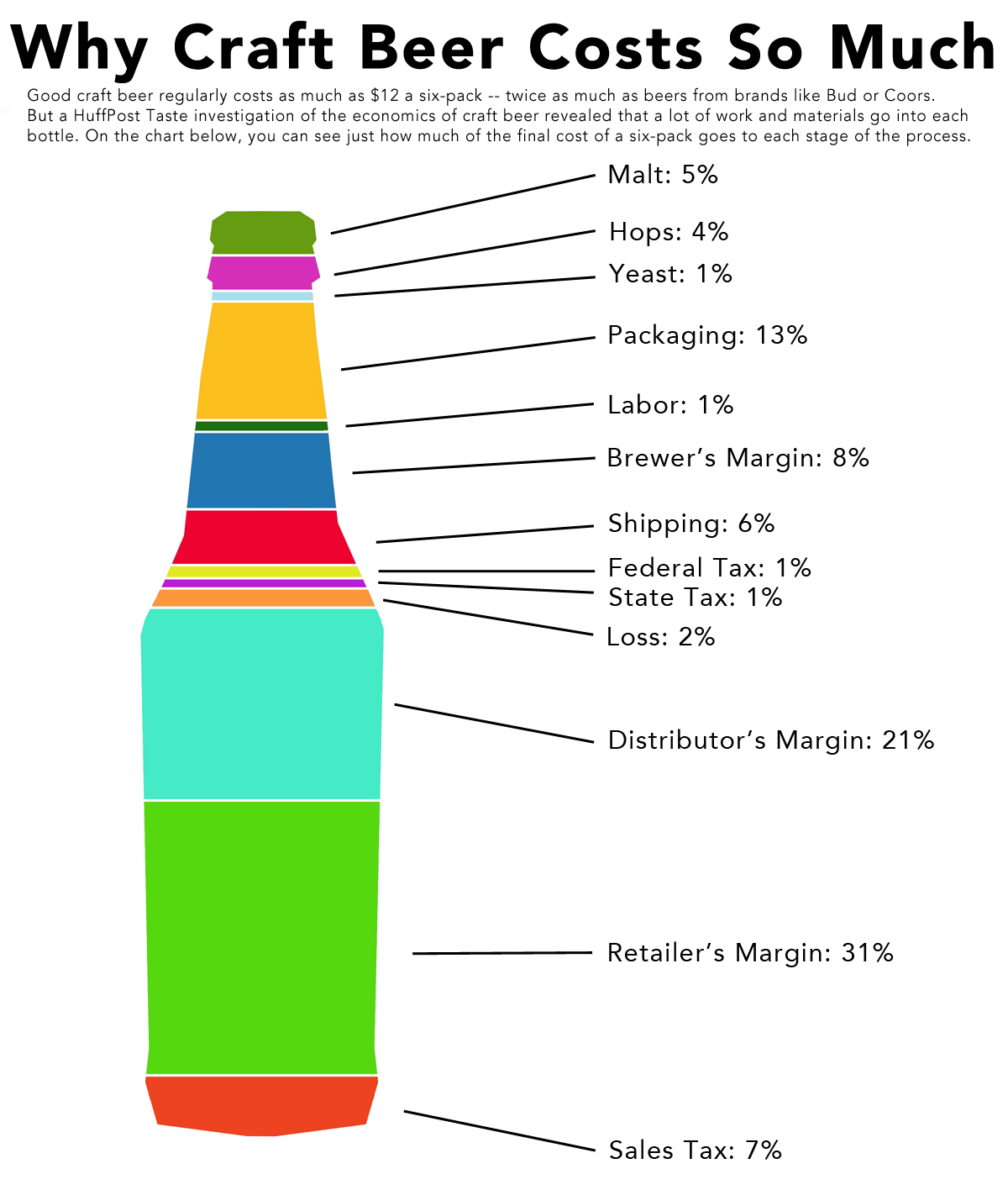azazel1024
Well-Known Member
This conversation pops up here every few months. You really have to understand that breweries have virtually no say in pricing, the infographic early in this post really sums it up. 60% or more of the price is determined by distributors and retailers. I've seen the same 4-pack of beer range from $9.99 to $16 in the same town. I saw Bourbon County this year at one retailer for $26 a 4-pack. I got it for $18 in another town.
Bars are often upping the price 5 times or more. Some breweries go to great lengths to work with distributors, retailers and bars to get a price they all agree on, whether its higher or lower, but at the end of the day, they really don't have a big say in the price.
If you really think about it, we determine the price. If no one buys 6-packs that go for $10 or more, the stores will drop the price. Some people don't mind dropping $10-15 on a bomber of beer, even more in some cases. If there is enough of those people out there, there is no reason for a distributor or retail to not charge that price and make a profit.
Very much. That said, within a breweries line-up, at the SAME store, rarely do I see something like a 5% blonde ale go for more than a 9% DIPA. Granted, the price may not reflect the difference in base costs to produce, the Blonde might be $8.99 for a 6-pack and the DPIA might only be $10.99.
These days, I really only buy beer for 4 reasons.
1) I am on vacation
2) I need to find a specific beer for a tasting and my family/friends have told me I am not allowed to bring HB (family and friends probably have 4-5 tastings a year)
3) I am out at a restaraunt and feel like having a brew
4) I am looking for something very specific and generally "off kilter", which to me tends to mean something "big", or sour or maybe I want to get a few sixers of a variety I haven't had in awhile because I want inspiration for a new brew. Like I might get 2-3 sixers of Dortmunder Export before I whip up a batch of my own.
I just brewed a Mild, 5 gallons worth and it cost me about $15. That was only because I was trying to compare S04 and Notty, so the yeast was a big part of the cost. If I was reusing, it wouldn't have cost me $10 for 5 gallons of good beer. Sure, a RIS would have been 3x the price, but that still would be a lot cheaper than anything I can get at the store. And often (though not always) better.









![Craft A Brew - Safale BE-256 Yeast - Fermentis - Belgian Ale Dry Yeast - For Belgian & Strong Ales - Ingredients for Home Brewing - Beer Making Supplies - [3 Pack]](https://m.media-amazon.com/images/I/51bcKEwQmWL._SL500_.jpg)
















































